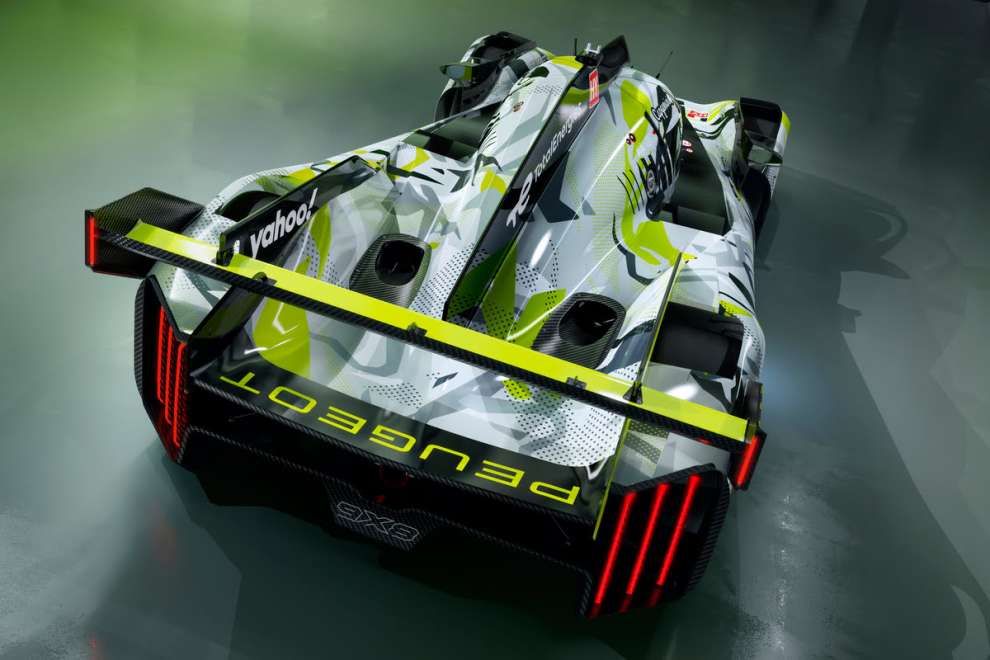By Carlo Platella
The first qualifying of the long-awaited new Peugeot, now equipped with wider rear tires and a wing, ended with a 14th and 15th place. The result actually appears far too severe, obscuring the progress made with the new package. “I would say it is a predominantly learning phase”, admits Nico Muller. Words which, together with what we saw on the track, give rise to hope for the future of the 9X8.
Chasing traction
What captures the public's attention on the new Peugeot is the appearance of the rear wing, which however distracts the gaze from the main novelty. “The tires are the biggest newsit's what the machine was built around”, explains Muller. Mikkel Jensen echoes this: “The tires are the main news, even if everyone talks about the wing. They make a big difference. When you have wider rear tires, it means that the weight distribution shifts to the rear.” In fact, Peugeot had to review the weight distribution to better exploit the wider rear tyres, as Jean Marc-Finot, vice president of Stellantis Motorsport, explains: “We moved the weight to the rear and also had to adapt the aerodynamic balance, which for stability reasons must be similar to that of the weights”.
Changes, those to the 9X8, which according to Jensen could no longer wait: “With the old tires we had no traction. We could engage the front hybrid at 150 km/h, but before that we had virtually no traction in slow corners. Last year at Fuji was a disaster in that slow sector.” The first data collected in Imola show progress on this front, as Finot says: “There are big improvements. We have more stability and with the wider tires we now have more support at the rear. Furthermore, having better traction, I expect tire management in the race to also benefit. We will be able to keep them alive longer.”
At Peugeot, however, there is an awareness that we still have work to do to reach the level of the best, as emerges from the words of Nico Muller: “One of the weak points was traction, which was lacking in slow corners. Now we have improved this, but remains the strong point of Ferrari and Toyota, which come out very well from slow. We are not at that level yet. We are trying to make steps forward, but a weak point remains.”
Strong points preserved
However, traction is not the only area in which the new Peugeot appears better than the previous one. Muller continues: “We have also improved the absorption of curbs and bumps. These were the main points where we could improve.” The result is a much more pleasant 9X8 to drive: “Right away behind the wheel you can feel that something has changed, but not a change from day to night. It feels more like an evolution of what we had and moving in the right direction.”
However, the progress of the 9X8 does not come at the expense of the merits of the previous project. “We have preserved the strong points of the original 9X8, improving its weak points”reassures Muller. “Before we saw that the car was very performing under braking. We have maintained it a little, I would say 80%. It's still strong under braking and at the entrance to the curve”.

A great effort
The debut of the 9X8 in Imola comes after the excellent performance of Lusail, where only a technical problem prevented Peugeot from celebrating the podium. However, the performances expressed in Qatar should not mislead the old package, which was rarely able to express the same potential seen in the Middle East. “When everything was perfect the performance was there, but it was very difficult,” explains Muller. “Now, however, the work of the engineers and ours has become simpler”. A very different picture compared to the updated 9X8: “It has a larger window. The balance is good and we can extract the performance. This was a problem with the old car instead.”
“It gives us more trim options, for example if we want to focus on a compromise that gives priority to driveability and curb absorption or if we want to enhance the aerodynamic platform. It's more versatile. […] I am positively surprised by how good the car feels to drive”. The great effort made by Peugeot to carry out the updates therefore appears more than justified. “We have redesigned 90% of the machine,” says Finot. “We made the decision at the end of March 2023. Designing and producing so many parts in such a short time was a great effort.”

Dreaming of Le Mans
The original concept of the 9X8 had proven to perform well at Le Mans, a track where the recent improvements will come in handy, according to Nico Muller: “Le Mans, even though it is a very fast track, still has curbs to absorb and you have to position yourself well to get through the traffic. Absorbing bumps better helps you. Traction is perhaps not that important, but still getting out of the chicanes well can make the difference on the long straights afterwards.”
Despite 90% new components, the basic framework is intact, preserving the level of reliability gained over the last year. “That's one of the good things about the updated car, which is that it's not entirely new”continues Muller. “We maintain the experience we had on the components with which we had suffered some reliability problems. We worked on it, but yeswithout starting from scratch. This is certainly an advantage.” Dreaming is therefore legitimate in view of the home race, considered by many to be even more important than the world title: “Le Mans has at least 70%. If one had to choose between Le Mans or the championship, I think everyone would answer the former.”
#WEC #Peugeot #positive #signs #car